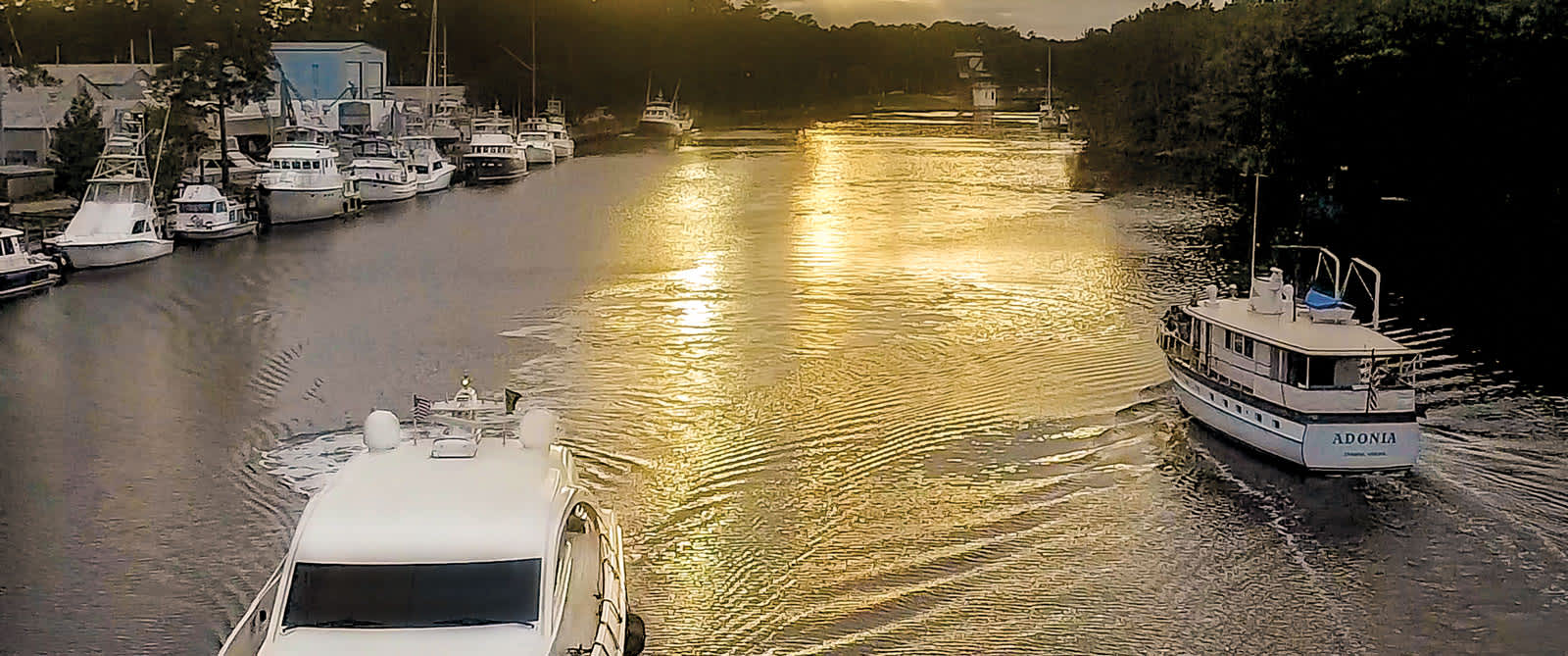Intracoastal Waterway
In southeastern Virginia, water is king. With 3,000 miles of aquatic passageways flowing along the Atlantic Ocean and Gulf of Mexico coasts, the Intracoastal Waterway is as diverse as the region's terrain.
The waterway is made up of natural inlets, salt-water rivers, bays, and sounds, including man-made canals. It provides a navigable route along its length without many of the hazards of travel on the open sea, making it possible for visitors to explore the Albemarle and Chesapeake Canal right in our backyard.
Today, the canal is a hot spot for recreational boaters. But centuries ago, the waterway was just an idea that would later shape Chesapeake’s past and present.
The Albemarle and Chesapeake Canal
The Albemarle and Chesapeake Canal was envisioned long before its time. Centuries ago, in fact, during the late 1700s.
The main purpose behind this canal was for it to provide a safe, economic link between the Chesapeake Bay in Virginia and North Carolina’s Albemarle Sound. Safer than the open waters of the Atlantic Ocean that is. However, construction on the man-made canal — and all 75 miles of it — wouldn’t begin until 1855. Why? Well, technology in the late 1700s wasn’t advanced enough to successfully use steam to power mechanical dredges for canal digging.
Though the Dismal Swamp Canal, also part of the Intracoastal Waterway, and near the A & C Canal, was dug by hand years before, new steam dredges would eventually be used on the Chesapeake project to cut through tree trunks and buried logs. The canal opened for business in 1859, making it one of the earliest American canals in the Atlantic Intracoastal Waterway.
You can thank Marshall Parks, a Norfolk, Virginia merchant, and shipowner, for that. He revived the 18th-century canal plan and made it come true by working to get bills passed through both the Virginia and North Carolina legislatures. Bonds were used to fund the canal project, which cost more than $1 million.
The Canal Today
Today, the Albemarle and Chesapeake Canal is maintained and operated by the U.S. Army Corps of Engineers. The canal is used by both commercial shippers and recreational boaters, so there’s plenty of work and play happening every day on this historic canal.
The waterway has many bridge locks, one of which is the Great Bridge Lock. At 600 feet long and 72 feet wide, this is where the waters of the Southern branch of the Elizabeth River meet the salt waters of the Albemarle and Chesapeake Canal. If you find yourself boating on the waterway, be sure to keep your radio tuned to channel 13 to communicate with bridge tenders. Northbound it locks on the hour, southbound it locks on the half-hour.
Not on a boat? Not a problem! Visitors can visit Great Bridge Lock Park and watch the lock go up and down on this busy “water highway.”
Want to plan your trip ahead or need more information on navigating the ICW or docking sites along the way? Visit here.
Stops Along the Way
There are several stops along the way on the Intracoastal Waterway in Chesapeake. From waterfront dining at Amber Lantern Restaurant to boater concierge service provided by GoChesapeake.






